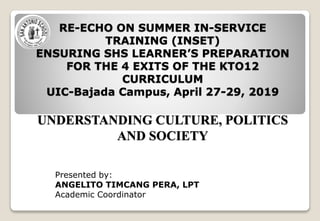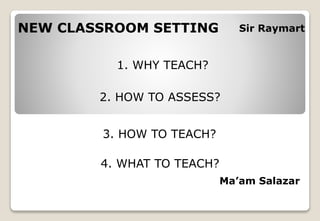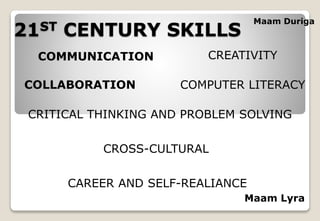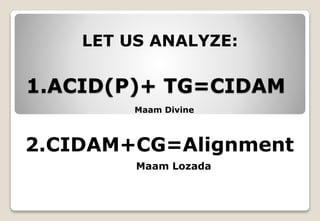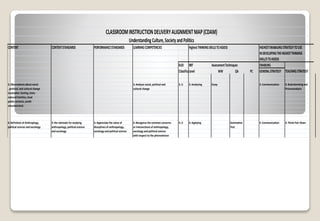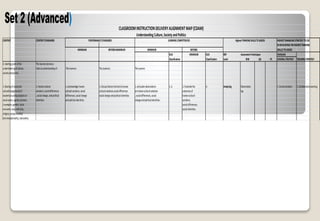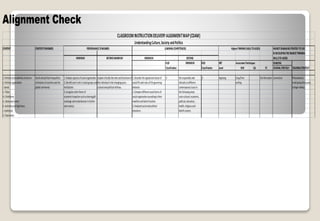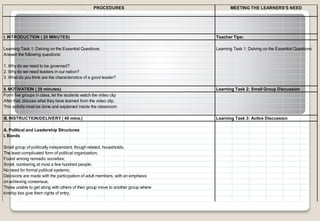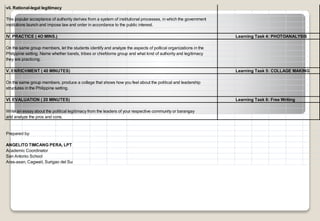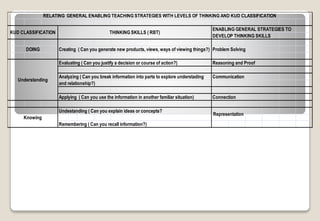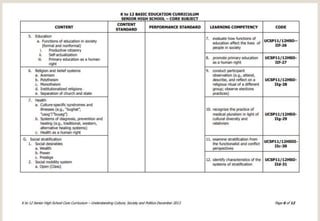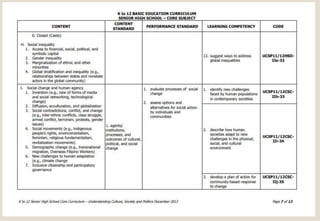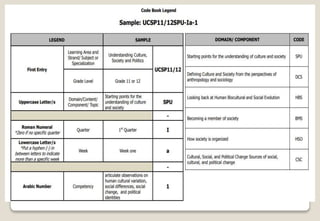The document outlines an in-service training for teachers on understanding culture, politics, and society. It discusses setting up a new classroom focusing on why teach, how to assess, how to teach, and what to teach. It also covers 21st century skills and the four exits of the KTO12 curriculum that learners should achieve. The training aims to help teachers design lesson plans aligned with curriculum guides using various acronyms. It provides an example of a sample teaching guide covering political and leadership structures with learning tasks and procedures.
